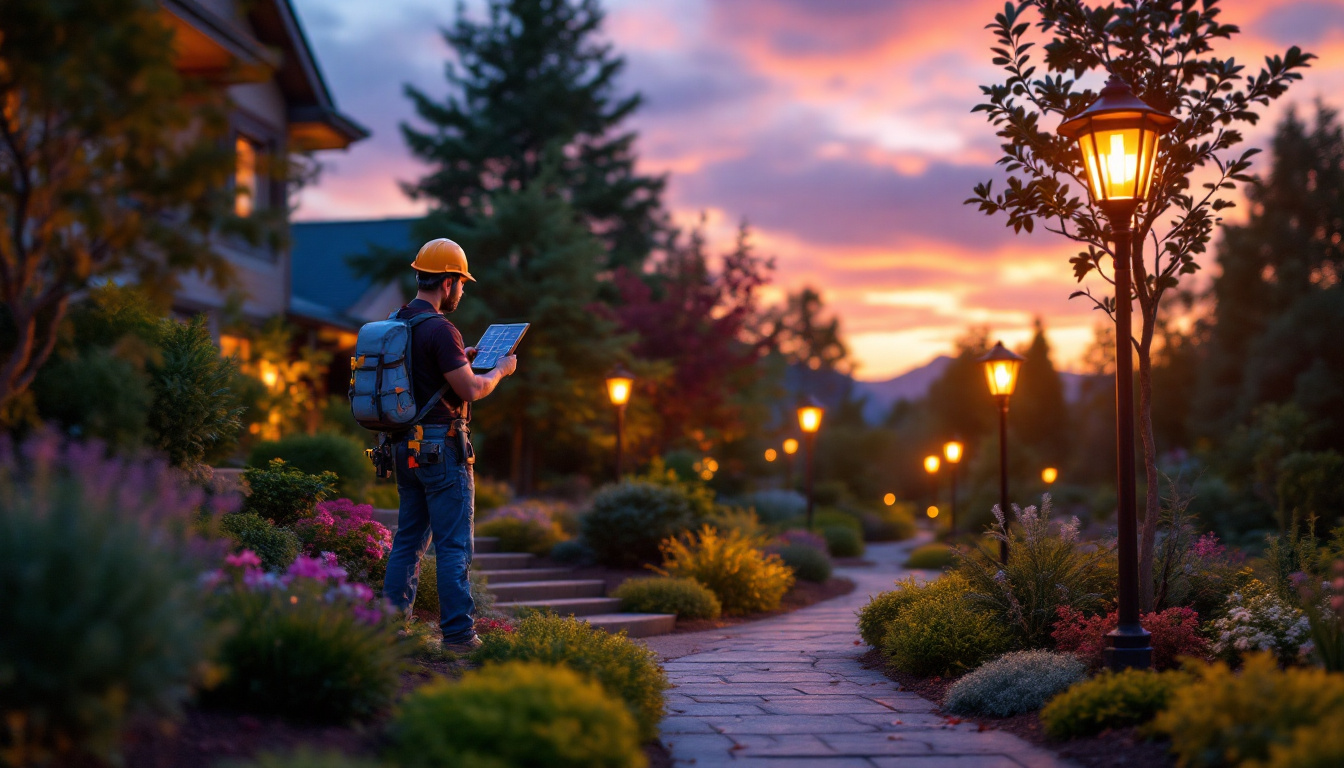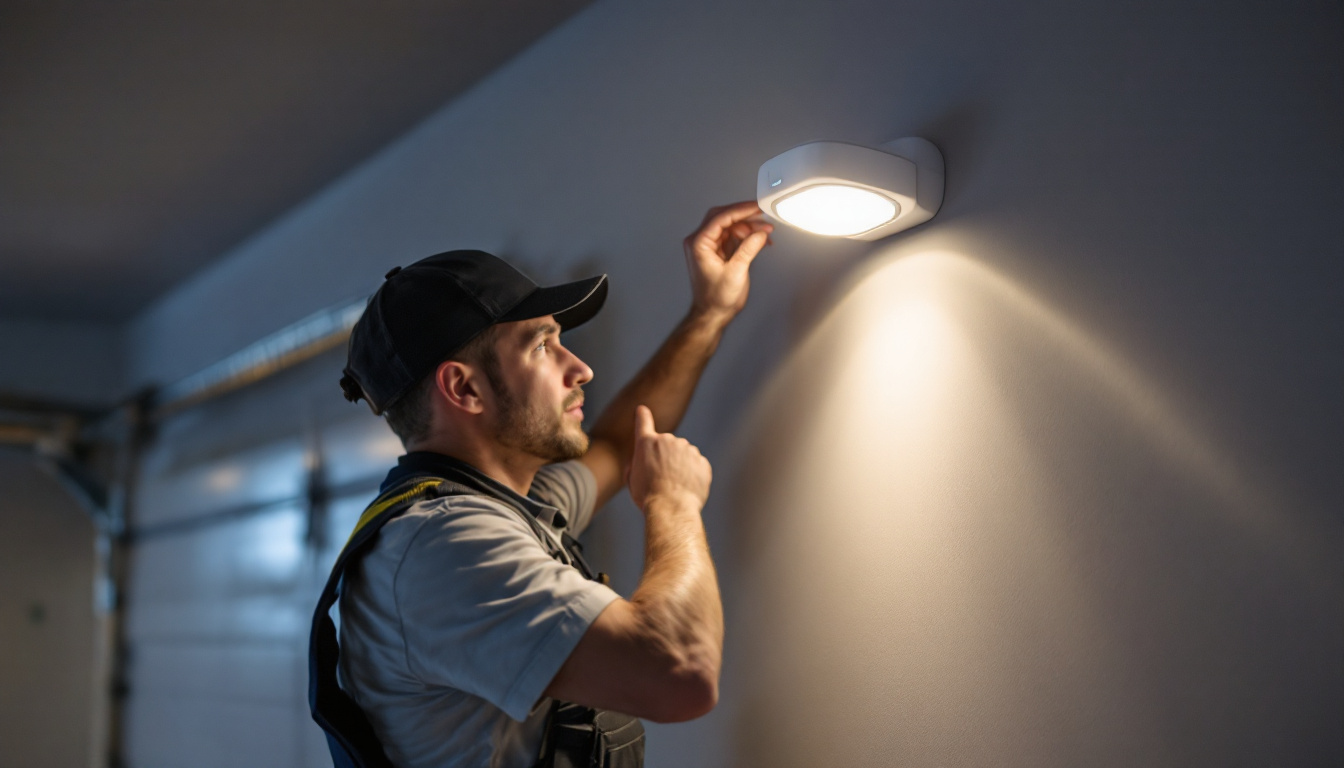
As the demand for sustainable energy solutions continues to rise, solar-powered LED lights have emerged as a popular choice for both residential and commercial applications. For lighting contractors, understanding the intricacies of these systems is essential for delivering high-quality installations that meet client expectations. This article delves into essential tips and best practices for lighting contractors looking to master solar-powered LED lighting solutions.
Solar-powered LED lights combine the energy efficiency of LED technology with the renewable energy provided by solar panels. These systems typically consist of solar panels, rechargeable batteries, LED fixtures, and a control system that manages the energy flow. The solar panels capture sunlight during the day, converting it into electricity, which is stored in batteries for use at night.
One of the key advantages of solar-powered LED lights is their ability to operate independently of the electrical grid. This feature makes them particularly appealing for remote areas or locations where traditional wiring is impractical. Additionally, these systems contribute to reducing energy costs and carbon footprints, aligning with the growing trend toward sustainability. The versatility of solar-powered LED lights allows them to be used in various applications, from street lighting and garden illumination to security lighting and decorative displays, making them a popular choice for both residential and commercial properties.
To effectively work with solar-powered LED lights, contractors must familiarize themselves with the primary components of these systems. The main elements include:
In addition to these core components, the installation process and placement of solar-powered LED lights play a crucial role in their effectiveness. Proper positioning of solar panels is vital to maximize sunlight exposure, which can vary based on geographic location and seasonal changes. Furthermore, advancements in technology have led to the development of smart solar-powered LED systems that can be controlled via mobile applications, allowing users to customize settings and monitor energy usage in real-time. This integration of technology not only enhances convenience but also promotes energy efficiency by enabling users to optimize their lighting based on specific needs and environmental conditions.
Moreover, the durability and weather resistance of solar-powered LED lights make them suitable for outdoor use in various climates. Many models are designed to withstand harsh weather conditions, including rain, snow, and extreme temperatures, ensuring reliable performance year-round. As the demand for sustainable energy solutions continues to grow, innovations in solar-powered LED technology are likely to expand, offering even more efficient systems that can adapt to the evolving needs of consumers and businesses alike.
A successful solar-powered LED installation begins with a comprehensive site assessment. This process involves evaluating the location’s sunlight exposure, potential obstructions, and the intended use of the lighting. Factors such as tree cover, building shadows, and geographical orientation can significantly influence the effectiveness of solar panels.
Contractors should also consider the local climate. Areas with frequent cloud cover or heavy rainfall may require a more robust system with larger solar panels or higher-capacity batteries to ensure reliable performance. Understanding the specific environmental conditions will help in selecting the right components for the installation. Additionally, it is essential to analyze seasonal variations in sunlight, as these can affect the energy production of solar panels throughout the year. For instance, regions that experience long winters may need to incorporate backup power sources to maintain functionality during periods of low solar gain.
Once the site assessment is complete, the next step is to design an effective lighting layout. This involves determining the optimal placement of solar panels and LED fixtures to achieve the desired illumination levels. Key considerations include:
Moreover, it is crucial to take into account the aesthetic aspects of the lighting design. The choice of fixtures should complement the surrounding architecture and landscape, creating a harmonious visual appeal. This can involve selecting fixtures with different color temperatures to enhance the ambiance of the space. For example, warmer tones may be preferred in residential areas to create a cozy atmosphere, while cooler tones might be more suitable for commercial settings that require a brighter and more alert environment. Engaging with stakeholders during the design phase can also provide valuable insights into community preferences and expectations, ensuring that the final installation is both functional and visually pleasing.
Preparation is key to a successful installation. Before beginning, contractors should gather all necessary tools and materials, including mounting hardware, wiring, and safety equipment. It’s also essential to review the installation guidelines provided by manufacturers to ensure compliance with specifications.
Additionally, clear communication with clients about the installation process can help manage expectations. Discussing timelines, potential disruptions, and maintenance requirements will foster a positive working relationship and ensure client satisfaction.
During the installation, attention to detail is crucial. Here are some best practices to follow:
To ensure the longevity and efficiency of solar-powered LED lights, regular maintenance is essential. Contractors should recommend the following practices to clients:
Even with proper maintenance, issues may arise. Understanding common problems and their solutions can save time and resources:
When selecting solar panels for a project, contractors should consider efficiency ratings, size, and durability. Higher-efficiency panels may have a higher upfront cost but can provide better performance in limited sunlight conditions. Additionally, panels should be weather-resistant and designed to withstand local environmental challenges.
The choice of LED fixtures can significantly impact the overall quality of the lighting system. Key factors to consider include:
The world of solar-powered LED lighting is constantly evolving, with new technologies and practices emerging regularly. Lighting contractors should prioritize continuous education and training to stay informed about the latest advancements. This may include attending industry conferences, participating in workshops, or enrolling in online courses.
Building a network of industry contacts can provide valuable insights and resources. Joining professional organizations or online forums can facilitate knowledge sharing and collaboration among contractors. Engaging with manufacturers and suppliers can also lead to better product recommendations and support.
Solar-powered LED lights present a unique opportunity for lighting contractors to offer sustainable and efficient lighting solutions. By mastering the essential aspects of these systems—from understanding the technology to executing successful installations and maintenance—contractors can enhance their service offerings and meet the growing demand for eco-friendly lighting options.
As the industry continues to evolve, staying informed and adaptable will be key to thriving in the competitive landscape of solar-powered lighting. By implementing these tips and best practices, lighting contractors can ensure they are well-equipped to deliver exceptional results for their clients.
Ready to elevate your lighting projects with the efficiency and sustainability of solar-powered LED lights? At LumenWholesale, we provide lighting contractors with the highest quality, spec-grade lighting products at prices that can’t be beaten. Say goodbye to inflated markups and hello to a vast selection of reliable, high-performance lighting that meets the strictest industry standards. With free shipping on bulk orders, you can stock up on premium lighting solutions without worrying about hidden fees. Make the smart choice for your next project and experience the best value in wholesale lighting with LumenWholesale.

Illuminate your outdoor spaces with lamp post solar lights, the perfect blend of sustainability and style.

Discover why lighting contractors should prioritize garage light fixtures in their projects.

Discover essential insights and tips for lighting contractors in our comprehensive guide on flood lights.

Discover the latest trends in garage motion lighting that every lighting contractor should be aware of.